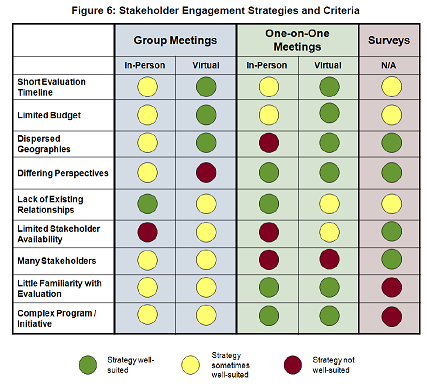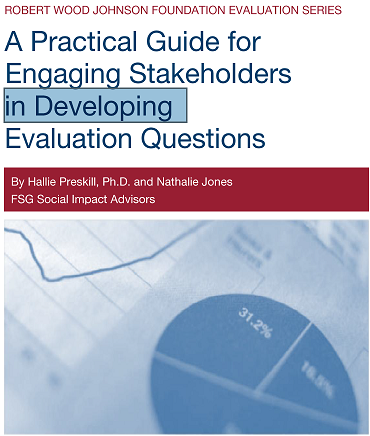Hi, I’m Aimee White and I am a Strategic Learning and Evaluation Consultant at FSG in the Seattle office and I have been a practicing evaluator for nearly 10 years.
Lessons learned – In my world, evaluation is only good if it is informative for the client and produces actionable learning. This means having a real partnership with the clients, engaging them as often as possible in the evaluation processes. However, involving “stakeholders” in the evaluation process can be challenging. Deciding who should be involved and at what stage creates complexity in evaluation planning and the more stakeholders included, the more challenging the work becomes! Now imagine working with society’s most challenging populations, those whose voices are often undervalued and the challenge just grew. Even though it might be challenging, I believe that authentic and meaningful engagement of key stakeholders in the design of the evaluation questions, and subsequent processes, makes for a more meaningful, relevant, and actionable evaluation overall. It is worth the effort to include the most relevant voices in your projects.
Rad Resource – I want to share with you today a tool “A Practical Guide for Engaging Stakeholders in Developing Evaluation Questions”, created by Hallie Preskill and Nathalie Jones of FSG, during a project with the Robert Wood Johnson Foundation, that can be used by evaluators to determine when it is appropriate and how best to engage stakeholders in the design of the evaluation questions. The guide is a step by step manual on how best to engage stakeholders and includes checklists and many practical tools.
I would like to draw your attention to the Stakeholder Engagement Strategies and Criteria matrix on p. 23. Using this chart can help evaluators determine if she/he needs to plan focus groups, one on one meetings with key stakeholders, or if surveys will be sufficient to gather meaningful input in the design of the evaluation questions. Once you have established the criteria and strategies that best suit your stakeholder group a variety of techniques are then presented that will create great learning for the evaluator as well as for the stakeholders. The guide also has worksheets that will improve your practice of better engaging stakeholders.

The guide is extremely useful, practical, and easy to use. I highly encourage you all to consider how better to engage your stakeholders in the work you are doing today.
Do you have questions, concerns, kudos, or content to extend this aea365 contribution? Please add them in the comments section for this post on the aea365 webpage so that we may enrich our community of practice. Would you like to submit an aea365 Tip? Please send a note of interest to aea365@eval.org . aea365 is sponsored by the American Evaluation Association and provides a Tip-a-Day by and for evaluators.


Thanks for informing me of this free resource “A Practical Guide for Engaging Stakeholders in Developing Evaluation Questions” (Preskill and Jones, 2009).
The assumption in this book is that evaluation involves only programs or initiatives. Why? According to Bronfenbrenner’s ecological systems theory, nested systems begin with the individual and emanate outward. Therefore shouldn’t we, too, begin with evaluation as self-design and build from there?
Excellent point Chad, Bronfenbrenner would be proud, as would Abe Wandersman and David Fetterman of the Empowerment Evaluation camp. The document was created while working on evaluating an initiative and therefore reflects that context. I would say however, that the intention of the document is to broaden the identification processes of key stakeholders as well as increase the engagement of those stakeholders in the evaluation planning and often even data collection, analysis, and reporting processes. This is an attempt to get closer to that individual level point of leverage for systems change. I challenge you to consider taking this point alongside the document and find ways to refine and enhance its use to increase the level of “self-design” as you say across environments other than programs and initiatives. Be sure and share your learning with us in the field! And as a Systems Topical Interest Group member I say thank you for the systems thinking it is truly the only way we will achieve sustainable societal level change.